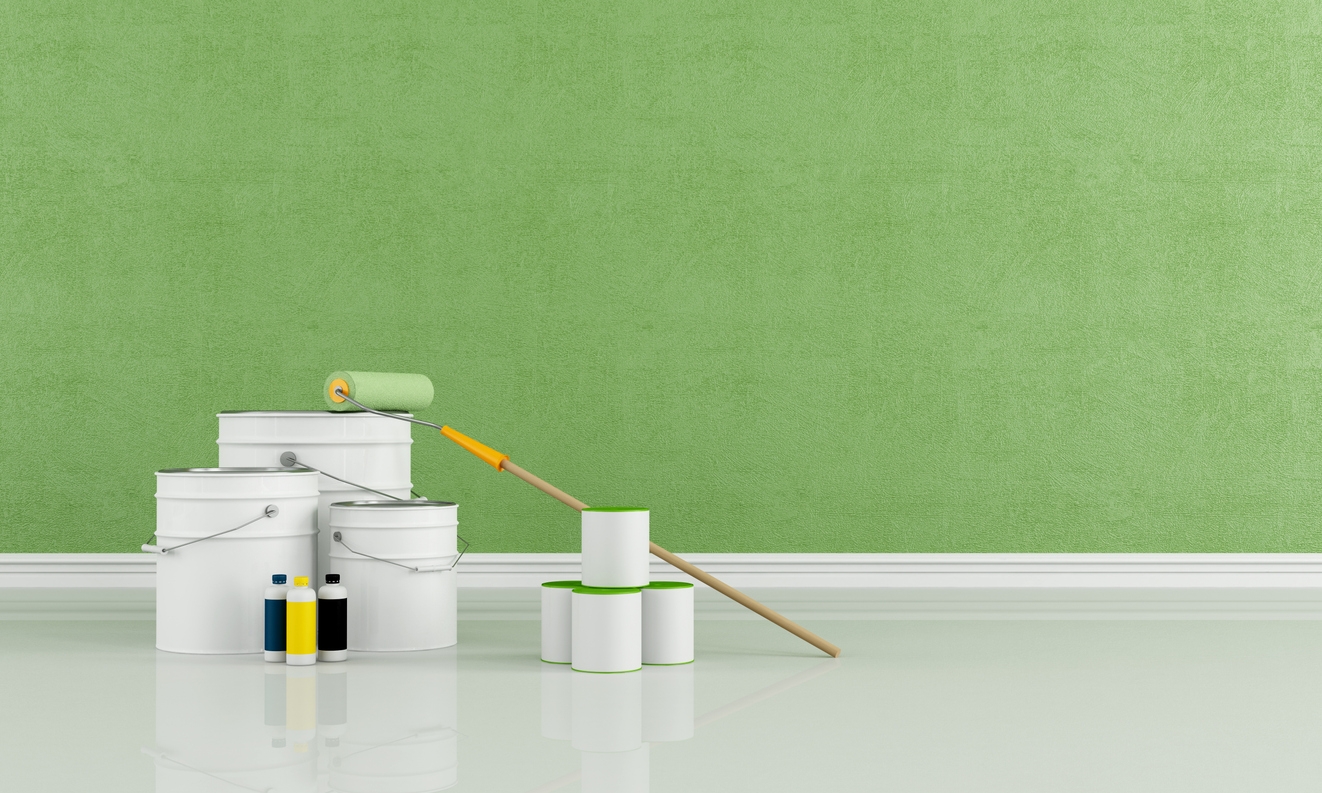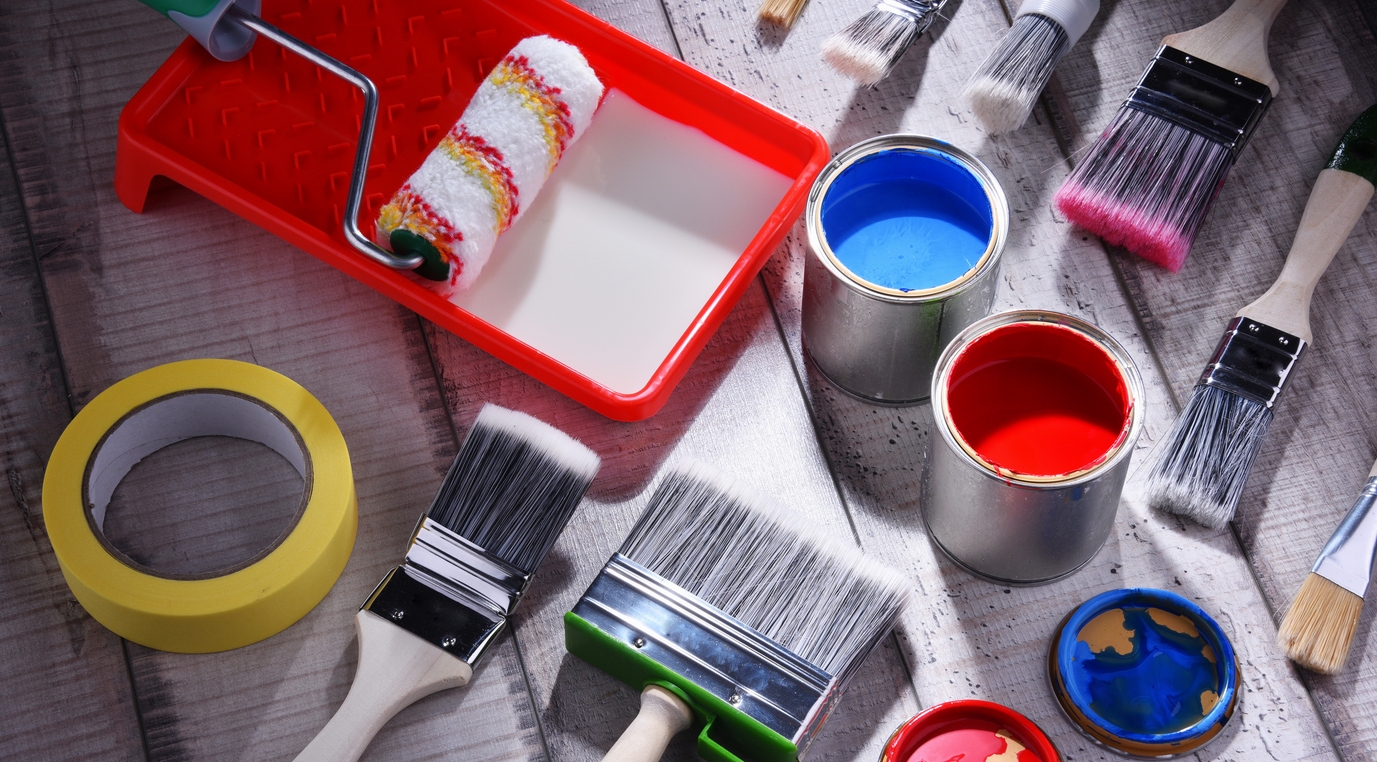Painting the interior of your house can give it a fresh look and feel. In this article, we’ll share practical advice for house painting. From selecting the right paint to preparing your walls, these tips will help you achieve a professional finish.
The Advantages of Interior Painting
Interior painting offers many benefits that go beyond just updating the look of your home. Here are some advantages of interior painting:
- Enhances Aesthetic Appeal: A fresh coat of paint can make your home look clean and updated. Choosing the right colors can also create a cohesive look that matches your style.
- Increases Home Value: A well-painted interior can increase your home’s market value. Potential buyers often prefer move-in-ready homes, and new paint can make a big difference.
- Protects Walls: Paint acts as a protective barrier against moisture, dirt, and wear and tear. This can help keep your walls in good condition for longer.
- Improves Air Quality: Using low-VOC or zero-VOC paints can improve the air quality inside your home. These paints have fewer harmful chemicals, making the environment healthier for you and your family.
- Personalizes Your Space: Painting allows you to express your personality and make your home uniquely yours. You can choose colors that reflect your tastes and create the atmosphere you want.
- Covers Imperfections: A fresh coat of paint can cover minor imperfections like scratches, dents, or stains on your walls. This can make your home look well-maintained.
- Boosts Mood: Colors can affect your mood and energy levels. Painting your home with colors that you love can create a more pleasant and enjoyable living environment.
- Easy Makeover: Painting is one of the easiest and most affordable ways to give your home a makeover. You can make a big impact without a major renovation.
- Increases Light: Lighter colors can make rooms feel brighter and more spacious. If you have small or dark rooms, painting them with light colors can help create an airy feel.
- Customization: Paint allows you to easily change the look of your home whenever you want. It’s a flexible way to update your space as your tastes or trends change.
Interior Painting Tips
Painting the interior of your home can be a rewarding project. Here are some tips to help you achieve great results. Each tip is designed to make the process smoother and more efficient.
Choose the Right Paint
Selecting the right paint is essential for a successful project. Consider the room’s use and the type of finish you want. For high-traffic areas, use durable, washable paints.
Prep Your Walls
Properly preparing your walls can make a big difference. Clean the surfaces, fill any holes or cracks, and sand the walls to ensure a smooth finish. Good prep work leads to better results.
Use Quality Brushes and Rollers
Investing in high-quality brushes and rollers can save you time and effort. They provide better coverage and a smoother finish. Cheap tools often leave streaks and require more coats.
Tape Off Edges
Use painter’s tape to protect edges and create clean lines. Taping off areas like baseboards, trim, and windows ensures you don’t accidentally paint over them.
Prime First
Priming your walls before painting can help the paint adhere better and last longer. It also provides a uniform surface, which is especially important when painting over dark colors or new drywall.
Work in Sections
Divide the room into manageable sections and paint one at a time. This helps you maintain a wet edge, which reduces visible lines and streaks. It also makes the job feel less overwhelming.
Paint Top to Bottom
Start painting from the top of the wall and work your way down. This technique helps catch drips and ensures a more even application. It also makes it easier to blend sections together.
Use Proper Ventilation
Good ventilation is important when painting. Open windows and use fans to keep the air circulating. This helps the paint dry faster and reduces fumes.
Clean Up Properly
After finishing your painting project, clean your brushes, rollers, and other tools thoroughly. Proper cleaning extends the life of your tools and makes them ready for the next job.
Allow Adequate Drying Time
Be patient and let the paint dry completely between coats. Rushing the process can lead to uneven coverage and peeling. Follow the manufacturer’s recommendations for drying times.
Finding the Best Painters for Interior Painting
Hiring the right painters for your interior painting project can be advantageous, as they can provide great service while creating the best results. Here are some tips to help you find the best painters for the job.
- Ask for Recommendations: Start by asking friends, family, and neighbors if they have any recommendations. Personal referrals can give you insights into the quality and reliability of the painters they have used.
- Check Online Reviews: Look at online reviews on websites like Yelp, Google, and Angie’s List. Pay attention to comments about the painter’s professionalism, punctuality, and the quality of their work.
- Get Multiple Quotes: Contact several painters to get quotes for your project. This will give you an idea of the price range and help you compare services. Be wary of quotes that are significantly lower than others, as they might indicate lower-quality work.
- Verify Credentials: Make sure the painters you consider are licensed and insured. This protects you in case of any accidents or damages during the project.
- Ask for References: Request references from past clients. Contact these references to ask about their experience and satisfaction with the painter’s work.
- Review Portfolios: Look at the painter’s portfolio of previous projects. This can give you an idea of their style and the quality of their workmanship.
- Discuss the Details: Have a detailed discussion with the painter about your project. Make sure they understand your expectations, timelines, and any specific requirements you have.
- Check for Warranties: Ask if the painter offers any warranties or guarantees for their work. This can give you peace of mind, knowing that any issues will be addressed.
- Observe Professionalism: Pay attention to how the painter communicates and presents themselves. Professionalism in these areas is often reflected in their work.
- Trust Your Instincts: Finally, trust your instincts when making a decision. Choose a painter who makes you feel comfortable and confident in their abilities.
Conclusion
Interior painting can be a rewarding and transformative project for your home. By following these tips, you can achieve a professional look and enjoy the fresh and updated feel of your newly painted space.
If you need professional help with your interior painting, Custom Painting, Inc. offers a range of services. Call us at 925-866-9610 or fill out our Contact Form to get started.




